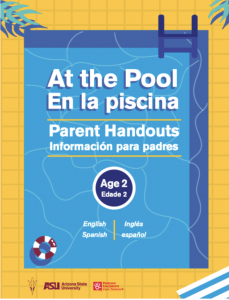
Diana Bowman and her team have worked to help prevent childhood drownings and injury by teaming up with Phoenix Children’s Hospital to produce a webinar to help parents and caregivers. With the Arizona heat, pools are a common way to cool down while enjoying the sunshine, but it can turn dangerous when parents don’t have the proper tools and information in the case of drownings. Bowman and her team have created a way for parents to learn about techniques that can save their child- and others in the case of an emergency. It is a common call that first responders get, drownings are the leading cause of injury-related death in children 1-4 in the U.S.
The Webinar discussed various ways parents are misinformed, and the methods they will use to help spread awareness of child drownings and how to prevent them. The information they provide is crucial for parents to know, so they can understand where their child is at developmentally and what they may do in and around the water that could put them at risk. For example, at two years old, children do not have instinctive swim skills, and may not remember skills they learned in swim class. That plus the love to run and climb on things can be dangerous when children are not fully aware of their surroundings. Bowman and her team also explain the social and thinking skills of two- year- olds, to help give parents a better idea of their child’s thinking process. Some other skills they list are: the ability to follow instructions with no more than two simple steps, copies other children, likes to find hidden things (ex. Snacks in a pool bag) and they like to break the rules. The team analyzed the skills of three and four-year-olds as well and discussed the behaviors that put them at risk of what they call a “submersion event.”
They stress that we know where fatal and nonfatal submersion events occur- the pool/ water, and we know that most of the events occur outside of “pool time” so one main strategy needs to be supervision. Other strategies suggested were child proofing the area and using devices to help keep children safe. Accurate and thorough water safety tips are key in caregivers keeping their children safe, so the team worked with Joey LaNeve, the Coordinator of Aquatics and Safety Education for Sun Devil Fitness and Wellness. This also helps prevent misinformation, and gives parents a clear understanding of the dangers that lurk around their child. The team also encourages parents to enroll children in aquatics classes so they have an understanding of what to do in the water. Check out the webinar here.
Share on facebook
Share on google
Share on twitter
Share on linkedin















